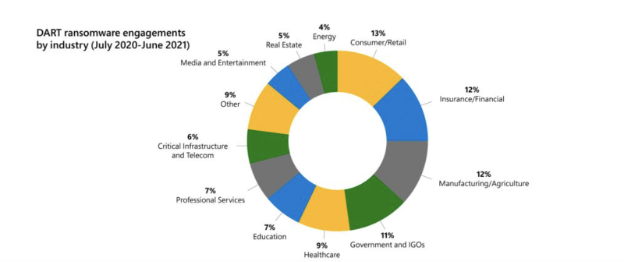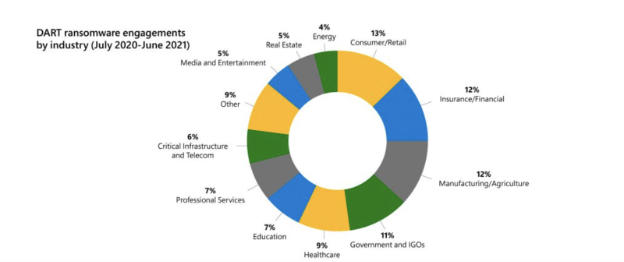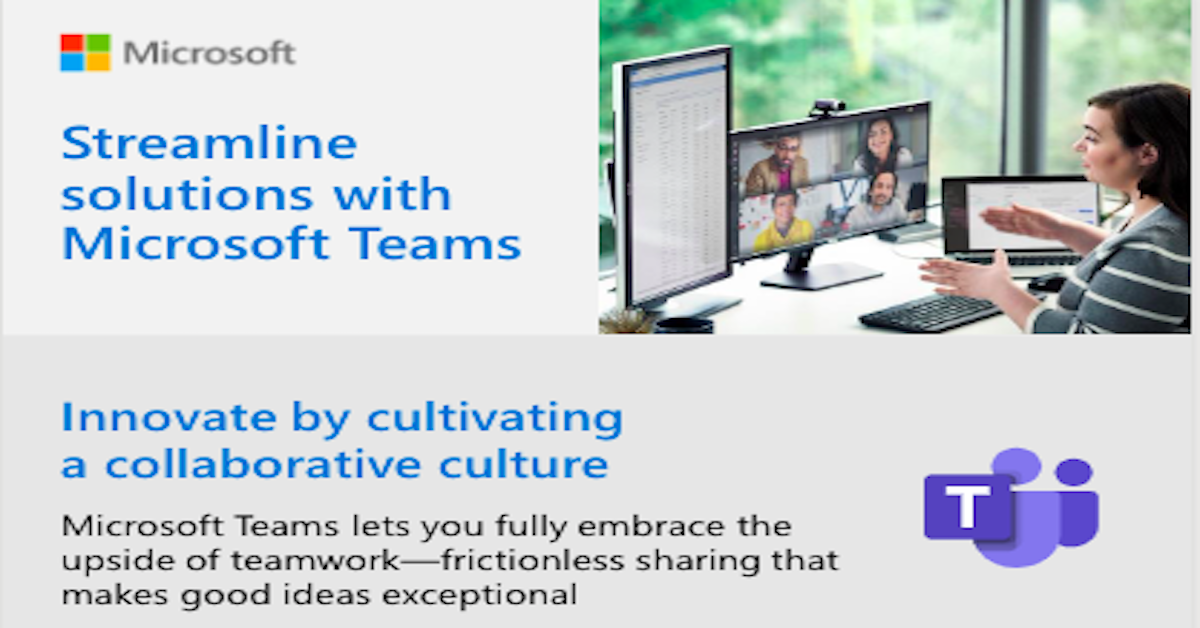The more you know about your vulnerability to ransomware, the more prepared you’ll be to mitigate or even prevent attacks. This infographic from the Microsoft Detection and Response Team (DART) gives an at-a-glance of ransomware attacks by industry. View the infographic for a reality check on your own knowledge of ransomware trends.
Ransomware by Industry Image
New Talent Development Classes – Relevant Training for Today’s Evolving Workforce
Here at Vermont Panurgy, we have witnessed firsthand as our clients and trainees have undergone radical transformations in their workplace, roles, expectations and procedures. Meetings are now primarily virtual, oversight of daily labor is greatly reduced, productivity measurements have had to adjust, performance reviews are more challenging, the list goes on. If you’ve had to re-envision your own job and the roles of your team, welcome to the club!
We understand that changes in the work environment require new tools to keep getting the job done. That’s why we are working hard to identify and prepare new Talent Development courses to help your employees and management stay confident, skilled and able to keep tackling their jobs. Here are some brief descriptions of just a few of some of our new classes, tailored specifically for the modern workplace.
Managing the Virtual Workplace
A survey undertaken by Owl Labs found that during COVID-19, nearly 70 percent of full-time workers in the United States were working from home. Of those surveyed, they indicated that after the pandemic ends, 92 percent expect to continue working from home at least one day per week, while 80 percent anticipate they will work from home at least three days a week. Make sure you’re on top of the virtual workplace trend with this one-day Managing the Virtual Workplace training course.
Appreciative Inquiry
Appreciative Inquiry, also known as AI, is a method for implementing change that is rooted in being positive, sharing stories of things that work well, and leveraging people’s strengths and the power of co-creation to initiate lasting, powerful changes that can make an organization the best it has ever been, because of people who care and are committed.
This comprehensive course focuses on appreciative inquiry using the 4-D model. Through a tangible approach, attendees will come away from the course ready to apply what they have learned back in their own workplaces.
Managing Difficult Conversations
Participants will learn the benefits of positive intent, active listening skills, and asking strategically relevant questions to get to the heart of any conflict or situation. Participants will study the processes of framing their conversations, selecting environments beneficial to their conversational goals, and creating safe environments when speaking. These tools will ultimately help learners get to the root of any problem.
Collaboration
“If you want to go fast, go alone. If you want to go far, go together.” – African Proverb
This proverb demonstrates the advantages of collaboration, which are essential in today’s business world. Collaboration involves people working together to produce a shared goal or result. Working collaboratively ensures greater success, or as the proverb says — going farther.
In order to be successful, organizations must learn what collaboration entails, what a collaborative environment looks like, gain an understanding of the advantages and obstacles, and how to develop strategies to improve a collaborative work environment.
Building Better Teams
Teams are the most important foundation on which successful organizations are built, and trainers who facilitate Building Better Teams as a one-day training course will help business leaders create effective, motivated, and productive teams. This courseware has been designed to impart to workplace leaders the value of working as a team.
These team builders will learn to: develop and enforce team norms and ground rules; generate and approach contracts; identify their own unique style and represent that in their team dynamic; leverage their knowledge to grow and lead effectively; build trust and develop the team’s maturity as a unit; and communicate with presence and impact.
Let us know if we can answer any questions or suggest other classes to help you or those who work with and for you to meet the needs of your evolving workplace. Contact: Diane Stowell at dstowell@panurgyvt.com or (802) 658-7788 ext. 224.
Training: The Key to Avoiding Turnover
Over the past few years, across nearly every industry, region and skill-level, our business culture has had to quickly readjust expectations on what “employee churn” and turnover looks like and how it can impact business. The global pandemic and resulting workforce and lifestyle adjustments have reshaped employees’ expectations of what a good job looks like, and employers are struggling to keep up.
Now, with labor shortages being felt across the board, an exiting employee no longer has as much potential for replacement as was once the case. According to the Society for Human Resource Management (SHRM), the cost of replacing an employee is around one-third of that worker’s annual earnings. Do the math for if you had to replace your highest-paid employee. That’s expensive!
Back in 2019, even before the pandemic, the labor market was tight, with unemployment levels falling to their lowest point since 1969. When the pandemic hit, office workers and their employers had to quickly adjust to remote work environments, while service-industry workers were dismissed in droves or forced into awkward workarounds intended to accommodate prevailing health-related concerns.
Employees suddenly were faced with a reckoning. Their once-familiar jobs had turned into something entirely different; technology became a requirement for non-tech-savvy people, jobs that were supposed to be focused on human interaction (management, HR, etc.) now included added difficulties of trying to connect over screens and cameras; in short the work environment was in shambles.
Employees responded to this sudden sea-change with what appears to be a collective reckoning. Faced with jobs that barely resembled what they had applied for, or what they had been doing only a few months ago, employees began to ask themselves if these jobs were really how they should be spending their time.
This resulted in one of the biggest shifts in modern history, with the Labor Department reporting that nearly four million workers in the United States quit their jobs in April 2021 alone. Workers are quitting, with a primary reason being lack of future development. And with the labor market remaining tight, it appears that the departing workers are not returning to the workforce at other companies, but rather dropping out altogether in favor of possibly more risky yet more flexible options like contract work, entrepreneurship, the gig economy, etc.
Employer Response: Increase Retention
The most obvious solution to this issue for employers is to increase employee retention. Address the needs of the employees and they won’t walk out on you, and you can avoid the high costs of turnover. If we know the most common reason people are quitting is due to lack of future development, the best way to keep those employees happy is to meet that need.
Larger companies could potentially readjust their hiring and promotion models to place higher value on advancement rather than external hiring for higher-up positions, but small and medium-sized businesses (SMBs) do not have nearly as much internal professional movement. It’s easy to feel stuck when you’re the office manager of a small dentist’s office. To what promotion could you aspire?
For SMBs and large businesses alike, the most reliable solution to helping employees see opportunity and potential is talent development. Regardless of whether an internal promotion is a possibility, psychology shows us that when people grow skills relevant to their job and/or personal passions, they tend to be more satisfied with their jobs, managers, and responsibilities. The more satisfied they are, the better they perform, and the less likely they are to leave. Higher retention leads to better workforce satisfaction and performance overall, which allows the employer to focus on growth, expansion and success, instead of struggling to fill continuously emptying seats. It’s a win-win!
Wondering what kind of training your employees might benefit from? According to a recent survey from Adecco, 44% of 500 senior US executives said that the American workforce lacks “soft skills” or “talent development” such as communication, creativity, critical thinking and collaboration. Even if your workforce is well-seasoned in the technical or office programs they’re using on a daily basis, soft skills or talent development are often-overlooked opportunities for growth that will not only improve the employee’s job satisfaction, but will also improve the overall culture of your business, as employees take the skills they learn and apply them to interactions with their coworkers, subordinates and management.
If you are looking for training opportunities for your workforce, look no further than Vermont Panurgy’s Learning Center. All of our classes are taught live by real-life, highly-experienced instructors, either virtually or in person. We offer classes in a range of categories, from PC Applications to Technical certification, Graphics & Internet Applications and Talent Development. Take a look at our most recent Class Schedule to find dates and prices, and reach out to us today to get your workforce signed up. Not sure what to sign up for? Give us a call and we can help you find the best learning opportunities for your team.
Never forget, a skilled team is a happy team. See you in class!
McCann & MullenLowe – Microsoft Teams Case Study
When bringing two companies together through acquisitions, you are often bringing in a different culture with different technology. This can often make it difficult to efficiently collaborate. Sharing files and streamlining communication is a common problem. Two of the leading agency networks, McCann and MullenLowe, needed help to create a single platform which enabled their employees to work together through close collaboration. Microsoft Teams provided the solution they were looking for.
Commvault boosts capacity and performance with Windows Server and Azure
What are the benefits of running Windows Server and Azure? Learn from Ernie Costa, senior virtualization engineer from Commvault, about freeing up capacity and boosting performance. Also, learn how Commvault saves on cost by leveraging Azure Hybrid Benefit and running Windows Server and Azure services.
Streamline solutions with Microsoft Teams
Using Microsoft Teams helps you save time by having all solutions in one place for improved collaboration and information sharing. Foster a collaborative environment and embrace the upside of teamwork – frictionless sharing that makes good ideas exceptional.
A company crazy about chocolate, serious about people, uses Microsoft Teams to build personal relationships
Dutch startup Tony’s Chocolonely grew out of a journalist’s exposé of child slave labor in the cocoa industry and his dream of making the chocolate trade slavery-free. The Amsterdam-based company grew quickly, but its original collaboration apps didn’t support its international expansion or its work-life balance ideals. Teams enables Tony’s Chocolonely workers to communicate on a personal level with their colleagues in Europe, America, and Africa. Adding telephony capabilities makes it even more powerful, with everything available in one single interface.
Z Displays | Z by HP
This video showcases HP’s line of Z Displays, a range of monitors with stunning colors, sharp resolution, and ergonomic features designed to reduce strain while you work. For more information, contact Vermont Panurgy.
Solution overview video
This video highlights the many ways Microsoft Teams can help your business inspire collaboration, reduce costs and risks, and deepen engagement.










